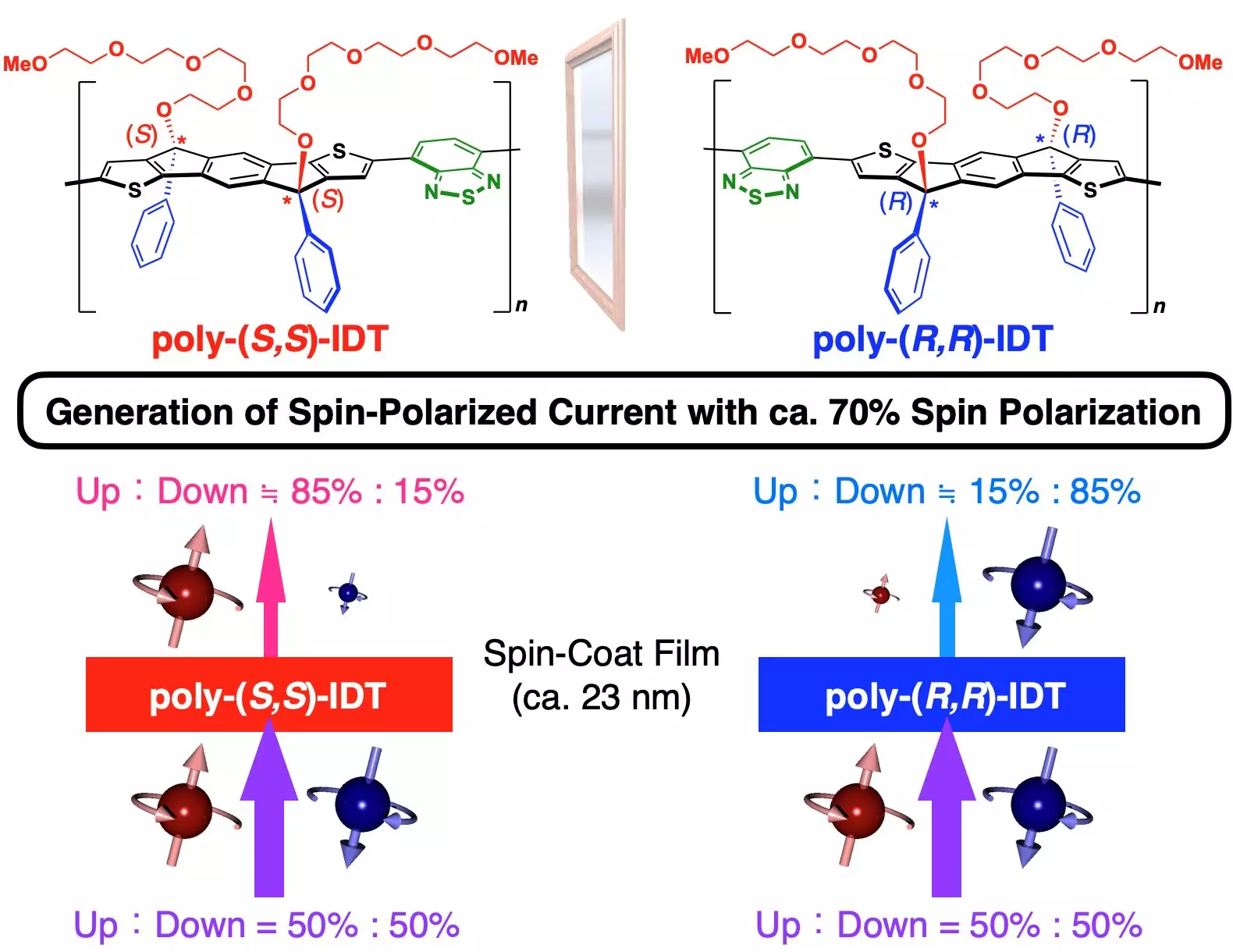Chirality is a remarkable characteristic whereby molecules or structures present as non-superimposable mirror images — think of a pair of distinct hands, where although identical in composition, their orientations confer unique properties. This inherent trait influences how molecules engage with various forms of energy, such as light and electricity. Researchers in the field of spintronics are particularly interested in chirality due to its potential to manipulate spins of electrons, contributing significantly to advancements in electronic technology.
A team from Osaka University recently announced a pioneering method for creating chiral copolymer films that exhibit robust spin polarization capabilities. Their research, featured in Chemical Communications, reveals that these newly synthesized films could serve as effective spin filters, exhibiting distinct behaviors when exposed to electrical currents polarized in opposing directions. By employing a chiral indacenodithiophene (IDT) derivative as a monomer in their copolymers, the researchers successfully integrated chirality into the polymer backbone, which is fundamental for generating the desired spin-polarized currents.
The researchers’ process hinges on the phenomenon known as chirality-induced spin selectivity (CISS). This principle asserts that chiral molecules can differentially interact with spins in an electrical current, leading to the emergence of spin-polarized currents. Such currents are essential in the evolving field of spintronics, where the focus is on the dual exploitation of electron spin alongside traditional charge transport mechanisms. Utilizing an atomic force microscope, the team measured the degree of spin polarization, deducing that the copolymers’ effectiveness could reach up to an impressive 70%.
One of the standout achievements of the Osaka University team is the simplicity of their film production process via spin coating, contrasting sharply with previous methodologies that typically required complicated procedures. This advancement not only streamlines the production of chiral polymer films but also enhances their applicability in real-world settings — notably within spintronic devices. The ability to replicate such promising results more efficiently opens new avenues for research and industrial applications, particularly in the realms of renewable energy technologies that capitalize on spin-polarized currents.
As we venture further into the 21st century, the potential of IDT copolymers in spintronics beckons opportunities for innovation across numerous fields, including energy efficiency and information technology. The implications of this research extend beyond just academic interest; they signify a robust direction toward developing smarter, more sustainable technologies. With the ongoing momentum generated by advances in materials science and nanotechnology, the future may see chiral polymers playing a pivotal role in the next generation of electronic devices, marking a significant leap in performance and efficiency in various applications.


Leave a Reply